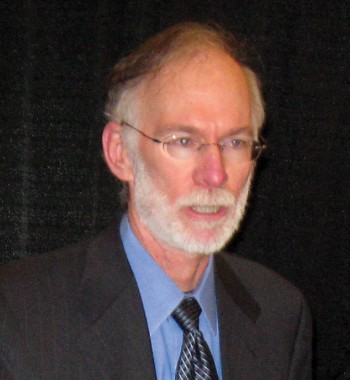Radiofrequency ablation and drug therapy produced similar overall reductions in atrial fibrillation burden during 2 years of follow-up in patients with paroxysmal atrial fibrillation, in a randomized trial with 294 patients.
"Given the risk of complications with ablation, our data support the current guidelines recommending anti-arrhythmic drugs as first-line treatment in most patients with paroxysmal atrial fibrillation," wrote Dr. Jens Cosedis Nielsen, a cardiologist at Aarhus (Denmark) University Hospital, and his coauthors. "However, some advantages of ablation were suggested by the data," Dr. Nielsen and his associates wrote in a report published online on Oct. 24 (N. Engl. J. Med. 2012;367:1587-95 [doi:10.1056/NEJMoa1113566]).
After 24 months, the atrial fibrillation (AF) burden was lower, and more patients were free from AF, in the ablated group. Moreover, physical well being was higher after ablation, and 36% of patients assigned to drug therapy eventually underwent ablation for recurrent AF, especially during the first year of the study. Although an initial strategy of drug treatment is appropriate, a substantial minority of patients will eventually need ablation, they noted.
The study also had some notable limitations, the researchers said. When patients underwent ablation, the end point of the procedure was elimination of high-frequency electrical activity in atrial areas around the pulmonary veins. "Because of rapid development of ablation techniques, this is no longer considered the state-of-the-art approach," they said. The goal today instead is "complete electrical isolation of the pulmonary veins." In addition, the study enrolled young, symptomatic patients with no major coexisting conditions, which precludes extrapolating the findings to elderly patients with persistent or permanent AF, or to patients with severe heart disease.
On the other hand, the study had the advantage of including a heterogeneous group of centers that differed from each other in terms of patient volume for, and experience with, AF ablation. Hence, "it is likely that [the] results are more representative of the broad general experience with ablation than those from a single, high-volume center."
The Medical Anti-Arrhythmic Treatment of Radiofrequency Ablation in Paroxysmal Atrial Fibrillation (MANTA-PAF) study enrolled patients at centers in Denmark, Finland, Germany, and Sweden with symptomatic paroxysmal AF who were aged 70 or younger and had no prior ablation or treatment with a class 1C or III anti-arrhythmic drug. Their average age was 55, and just over two-thirds were men.
Of the 146 patients randomized to treatment with radiofrequency ablation, 140 underwent an average of 1.6 ablation procedures each. Three patients each underwent four ablations, the highest number received by any individual. After 2 years, 13 patients in the ablation group received at least one anti-arrhythmic drug.
Among the 148 patients randomized to initial drug treatment, 131 patients received a class IC drug, and 15 received a class III drug. The average number of drugs used per patient was 1.26, and after 24 months 54 patients (36%) underwent ablation procedures because of inadequate drug response, at an average of 9 months after the study began.
During follow-up, the researchers tracked AF episodes by 7-day continuous ECG monitoring at 3, 6, 12, 18, and 24 months after the study began. The difference in AF burden throughout the full 2 years between the two treatment groups was not statistically significant. The difference in AF burden at the individual measurement periods was also not statistically significant, except during the final 24-month monitoring, when the burden in the ablated group ran significantly less than the rate in the drug-treated patients.
Secondary outcome analyses showed that significantly more patients in the ablated group were free from any AF at 24 months, 85% with ablation and 71% with drug treatment, and significantly more ablated patients were free of symptomatic AF at 24 months, 93%, than patients on drug treatment, 84%. In addition, the ablated patients had a significantly better average score on the Short Form 36 (SF-36) physical component summary score compared with those on drug therapy. The two treatment groups showed no significant differences in improvements on the mental-component summary score.
The two treatment groups also had very similar tallies of total serious adverse events. Three patients in the ablation group developed a severe cardiac tamponade secondary to their ablation. Deaths occurred in three ablated patients and in four treated with drugs only.
The MANTRA-PAF study was sponsored in part by an unrestricted grant from Biosense Webster, a company that markets an ablation mapping system (CARTO) and an ablation catheter (NaviStar ThermoCool). Dr. Nielsen said that he is an advisor to Sanofi-Aventis and receives lecture fees from Biotronik, Medtronic, and St. Jude. One of the study’s coauthors said that he received consulting fees, lecture fees and grant support from and was aboard member of Biosense Webster. Another coauthor said that he received consulting fees from Biosense Webster.


